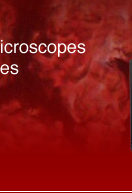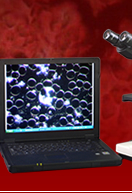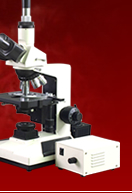
We Take a Look at Textile Fibers under a Microscope
Examining fibers of clothing under the microscope has been a practice of the textile industry and even of consumers for a long time. The textile industry needed this procedure in order to know the quality of the fibers before they weave it into fabrics. The wholesale consumers, on the other hand, examine the fibers of the fabrics they buy in order to know if it is genuine or not. For our own little microscope experiment, we will examine the four major fibers of various textiles. High school or elementary students can perform this science microscope activity with their educational microscope in order find out what kind of material that is used for the fabrics that we use in our everyday lives.First, we will examine what cotton looks like under a high power compound light microscope. But to begin, we have to obtain raw cotton. If this is not possible, non-absorbent cotton will do. Moisten a few threads of cotton with a drop of alcohol on a microscope slide. When most of the alcohol has already evaporated, add another drop of water and put on the cover slip.
Looking at the cotton sample under a high power compound microscope, cotton fibers look like hairs that are somehow similar to twisted ribbons with thick edges. There we will find a narrow cavity near its center and this is called the lumen. A cuticle or skin covers the whole area but this is sometimes not seen in some cotton fabrics because they get destroyed from the chemicals that treat the raw cotton. The next fabric that we will examine under the high power compound light microscope is flax. Flax comes from the stem of the flax plant and is used for the manufacture of linen. To obtain a sample of flax, we can ask a rope maker for some raw flax. Other than that, we can just find some linen-made fabric that we have in our closet and pull out some thread from it. Place the procured fibers on a slide with a drop of water and put on the cover slip.
If we examine flax under a compound light microscope, we will see that it has very thick walls and a narrow lumen. This lumen also has a uniform width with little materials that look like granules. We will notice that on its walls, it has oblique lines that crisscross each other. There is also the canal that can be seen as a narrow line in the center of the fiber. Sometimes, we may also see some swellings or knobs. These microscopic knobs are due to the mechanical processes where the fiber was subjected to.
Another fiber that we will examine under our high power microscope is wool. Raw wool is best to obtain for this experiment but we can also use the threads of some material made of wool. We have to separate the threads and soak them in a drop of water. You will notice that some fatty matter will appear and this should be removed by gently washing the wool with water. When this is done, wash the wool this time with alcohol then shake it with a little ether. Once it is thoroughly dry, put the wool thread on the microscope slide and perform a wet mount (that is, add a drop of water on it and put the cover slip on, just the same with the previous experiments).
Under the high power educational microscope, we will see that each wool fiber has microscopic scales. It also has an inner core made up of cells. It is said that by counting the number of scales, scientists can tell from which animal the wool came from.
Lastly, we examine a fiber of silk under a compound light microscope. Silk threads are spun by silkworms and it consists of an outer, middle and inner layer. Only the middle layer is used for commercial purposes. When we observe a silk thread taken directly from a silkworm’s cocoon, we will see that there are a couple of solid rod fibers parallel with each other. It has a very smooth and shiny surface and doesn’t have lumen or cell structure.
When we take a look at a manufactured silk thread under a scientific microscope, on the other hand, it will look like cylinder-shaped fibers but are also almost without structure. There is also the artificial silk which is manufactured in place of the genuine one. It is easy to distinguish what artificial silk looks like with the use of a high power compound microscope because they are merely flat fibers as opposed to the smooth rods of the real one. Also we can add a drop of iodine to the sample and if it turns brown, it is genuine silk that you have. Now that we have the knowledge of what these four major fabrics look like, we can go on and examine what fabric our clothes or accessories have. Teachers can tell their students or kids to gather some fabrics at home and figure out the kind of fabrics that they are made of. This can prove to be a very fun and educational science activity for everyone with the use of a scientific microscope.




